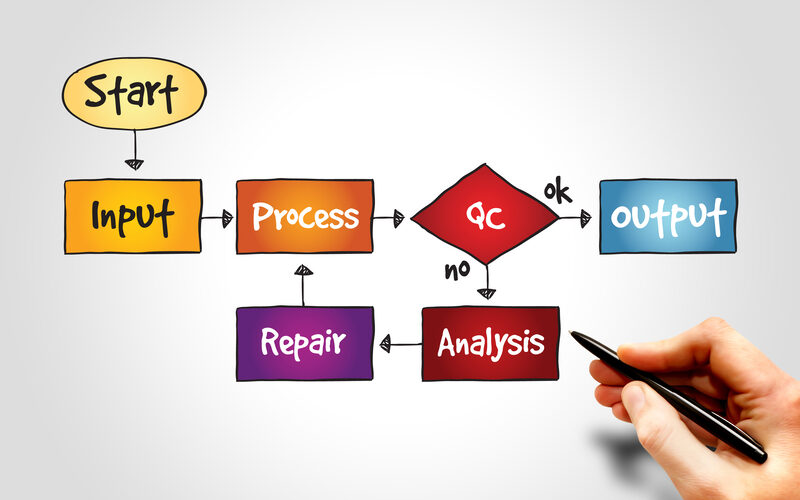In every industry, a fair bit of competition is to be expected. But it seems…

There is something wrong with your process: it keeps failing and you don’t know why. You ask yourself, “What’s wrong?” The first step to answering this question is to draw a process map. But what is a process map and what are its benefits? Keep reading to find out.
Process Map Defined
A process is any group of activities that turn your inputs into outputs. A process map graphically lays out all the activities in a process. Types of process maps include flow-charts, workflow diagrams, high-level process maps, value-added chain maps and value stream maps.
Which type of process map you use depends on your goals. Drawing a process map usually involves drawing a bunch of shapes or symbols that represent an activity. Then, each one of them is connected to the next activity with an arrow. This helps anyone looking at the process map to visualize the flow.
Why You Should Create a Process Map
Drawing a process map comes with several benefits. Here are the biggest ones:
- A process map will give you a better understanding of the process, considering it is so easy to follow. This makes them an excellent tool when training new employees.
- You can use process maps to simulate various scenarios before implementing the changes to the actual process.
- Mapping a process also helps everyone in the organization visualize it the same way.
- A process map can serve as a blueprint, which enables you to document all the processes in your organization.
- Process maps can highlight areas where improvements can be made to make it more efficient. This means you can make sure that every step in the process is adding value and errors are being kept to a minimum.
- Duplicate, excessive or missing steps can be identified, allowing you to significantly reduce waste.
- You can use process maps to identify processes that are not compliant with various standards and certifications (ISO, for example).




Comments (0)